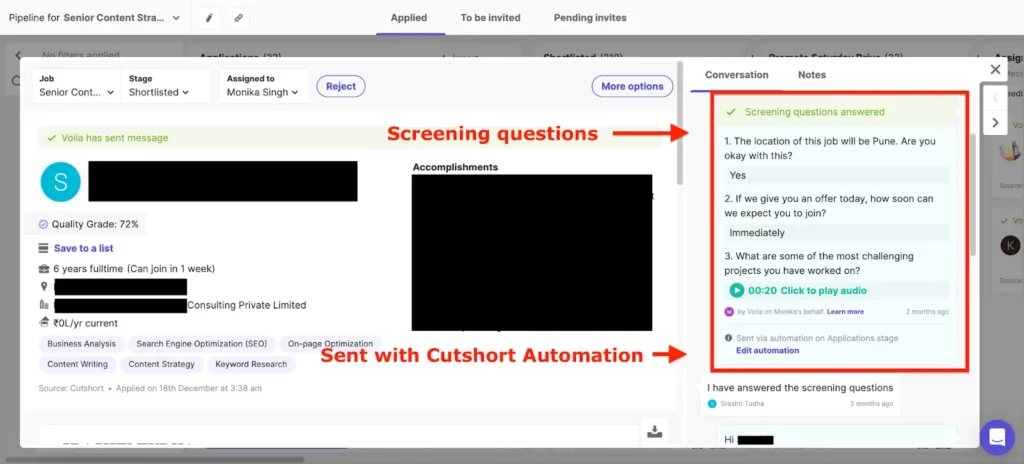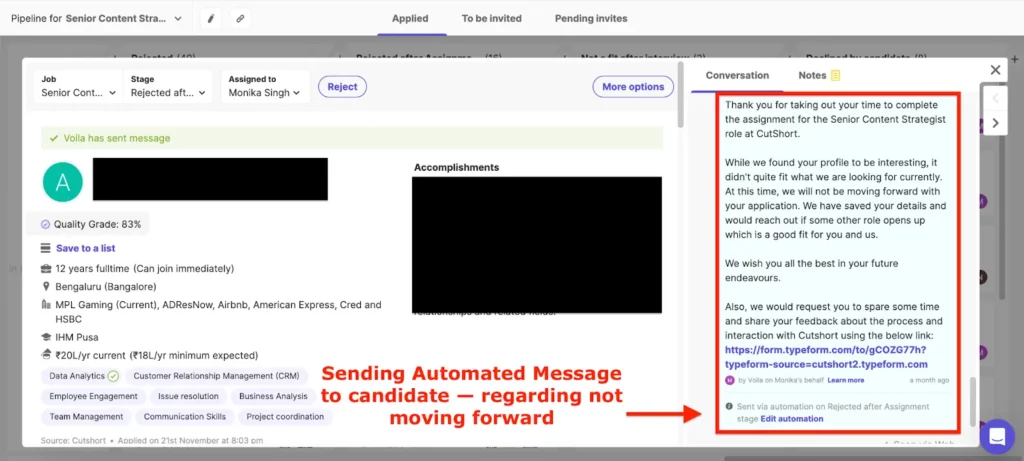Has your hiring cycle been slow? How is it impacting your recruitment efforts? Is a slow hiring cycle causing problems for your business?
A slow hiring cycle can cause several problems for a business. It may cause potential candidates to lose interest in the job and quit the process altogether. In a competitive job market, candidates usually apply for multiple positions, which means that sometimes, a slow hiring process can make you lose out on premium talent.
A slow hiring process can also make it difficult for a company to quickly fill critical positions, impacting productivity and slowing business operations. This can be particularly problematic in fast-paced environments or industries where time is of the essence.
As an HR, you must maintain a fast hiring process. This guide will tell you how to hire employees quickly and fix your slow hiring cycle.
Step 1: Standardize your hiring process
Standardization in the hiring process will ensure all candidates are evaluated fairly and consistently, which can improve the quality of hires and reduce the risk of making poor hiring decisions.
Standardization also streamlines the hiring process, making it more efficient and reducing the time and resources required to fill a role. A standardized process can also increase transparency, making it easier for candidates to understand what is expected of them and what the selection process entails.
How can you standardize the hiring process?
Here is what you can do to standardize your hiring process:
- Define the hiring SOP: Develop a transparent, step-by-step process that outlines the stages of the hiring process, including the job posting, resume screening, interviewing, reference checking, and offer letters.
- Create a consistent set of criteria: Develop standards that will be used to evaluate all candidates, such as education, work experience, and specific skills or competencies.
- Documentation: Have a consistent format and tool for documentation. You can use platforms like PandaDoc, which have functionalities like e-signature, document templates, offer letter tracking, etc.
- Hiring platforms: Platforms like Cutshort can help standardize the hiring process by offering consistent candidate evaluation methods.
Cutshort also gives you a centralized candidate database, automated email and text communication functionality, application tracking, and efficient integrations with HR systems. Add Cutshort to your hiring efforts to enhance the process and acquire the best candidates.
Step 2: Have the Role Kick-Off Meeting
HR recruiters don’t always understand the intricacies of a job. Which means that there can be a lot of disconnect between the hiring team and the candidate’s final office team.
A role kick-off meeting can solve this problem. Before you begin the hiring process, conduct a meeting with the department head or future reporting manager of the role you are hiring for.
Here are a few things you must discuss in a role kick-off meeting.
- What is the primary reason for hiring for the role?
- What specific gaps will the new candidate fill?
- What are the hard skills needed for the job? Which of these skills are non-negotiable?
- What are the three most essential things the candidate needs to have to shine in the role?
- What is the team culture and working style?
- What will the short and long-term goals be for the candidate?
- What will the job be like in the first three months?
- What will be the evolution journey for the job?
After this discussion is done, you will have enough information to create the job description and conduct the initial interview rounds.
Step 3: Create Job Description Templates
Creating a job description template will standardize the information included in job postings, making it easier for hiring managers to create accurate and consistent job postings.
A job description (JD) template also helps ensure that all candidates have a clear understanding of the responsibilities and requirements of the job they are applying for, which can improve the quality of the candidate pool and reduce the risk of misunderstandings.
By using a job description template, organizations can also save time and reduce the effort required to create job postings, as the template can be used repeatedly for multiple job postings. Hence, having JD templates means that you can speed up your job posting efforts and reach more candidates in a shorter amount of time.
What are the mistakes you should avoid while creating JD templates?
When creating a job description, avoid these mistakes:
- Vague language: Be specific and provide concrete examples.
- Biased language: Focus on essential qualifications and skills. Don’t use gender biased language such as “superhero”, “ninja” in the JD’s.
- Overemphasizing education: Focus on necessary skills and experiences.
- Lack of transparency: Do not hide company location or compensation information. Also include information about the work environment, culture, and employee benefits.
Step 4: Sourcing Candidates: Go wide, Go Deep, and Go One Step Ahead
“Go wide and go deep” is a balanced approach to recruiting and selecting candidates. Going “wide” means casting a wide net to reach a large pool of potential candidates. This involves using multiple channels to promote the job opportunity, such as online job boards, social media, etc.
Going “deep” means thoroughly evaluating each candidate to ensure they have the skills, experience, and fit for the job. This involves conducting in-depth interviews, reference checks, skills assessments, etc.
Not going wide and deep during hiring (or going narrow and shallow) can cause many problems. It may make you lose out on premium candidates. Additionally, it may result in you being stuck with a subpar candidate who might be detrimental in the long run.
This is where platforms like Cutshort shine. While we specialize in a specific niche i.e. tech talent, we make hiring tech talent insanely easy with a pool of 3M+ tech candidates, verified skills and 0% backouts. Plus, you can access advanced search and profile filtering features which help make sourcing efficient and more accessible.
That said, it that enough to Go wide, Go Deep.
Nope.
While going wide and going deep is a tried and tested formula for hiring, it cannot make you stand out. Every company looking for good hires is doing this.
To set yourself apart, you must grade and evaluate your candidates based on their skills and profile. This way you can be sure that every candidate you are investing in has the basic skill eligibility you need for your company.
This is another point where Cutshort proves crucial to modern hiring. While companies can create and deploy their own initial grading assessments, Cutshort has its own Quality Grader tool that gives every candidate a score based on their skills and the company’s metrics.
Cutshort also enhances your sourcing by giving you the Role Matcher feature which can directly shortlist the candidates that precisely fit the role requirements entered by you.
Step 5: Automate. Automate. Automate.
Automation can significantly enhance the efficiency and consistency of the hiring process. By automating specific tasks, such as scheduling interviews, sending out notifications and reminders, and tracking applicant progress, recruiters and hiring managers can save time and reduce the risk of human error.
Automation can also standardize the hiring process by providing a consistent set of criteria for evaluating candidates, reducing the potential for bias, and ensuring that all applicants receive the same level of consideration.
Lastly, automation can help you save hours and even days in the hiring process. For example, the initial screening call for any candidate may last between 20 to 30 minutes. If you automate that process and turn it into a text or voice-based one-way interview, you can cut down that time to 5-10 minutes. So where you were taking 5 hours for ten candidates, you can take less than 2 hours.
Here is a list of tasks that you can automate to save time.
- Vetting:
Vetting a candidate can take anywhere from a few minutes to a few hours. However, an in-depth vetting process generally takes a few hours per candidate. It has mainly two functions.
- Screening questions: As discussed above, the initial screening can take about 30 minutes per candidate. However, automation can bring it down to 10 minutes or even less.
- Skill assessments: Skill assessments are highly time-consuming and can take more than 6-7 hours per candidate. However, if you automate certain skill-assessment functions like skill test administration, reference checking, background checks, etc. you can bring the duration down to about 2 hours for the candidate.

Cutshort Dashboard
- Employer-employee communications:
Employee communications include all the verbal exchanges that happen between the candidates and the organization. This includes all the scheduling calls, emails, confirmations, etc.
A lot of time gets wasted just doing this back and forth. However, automated interview and assessment scheduling can help completely eliminate the need for these and generate automatic communication for the candidates.

Example of automatic sending assignment on Cutshort

Example of automated message on Cutshort
- An efficient onboarding process:
Depending on the organization, the onboarding can take anywhere between two weeks to three months for new hires. There are several parts of onboarding that you can automate to shorten its time duration for your organization and streamline the process.
For example, getting signatures from candidates on relevant documents can take several days. However, using automated systems to get e-signatures and easy-upload platforms can help you get done with the documentation process in just a few hours.
While orientation and training can take one to two weeks traditionally, if you give employees online access to company resources and self-service portals, you can finish it off in just a few days. Lastly, automating regular reminders for new hires to take the necessary steps for successful onboarding can also save you hours in time.
Step 6: Do’s and Don’ts of Negotiation
When it comes to salary negotiations, there are certain dos and don’ts that hiring professionals should keep in mind. Here are some key points to consider:
Dos:
- Research: Before entering into salary negotiations with a candidate, make sure you have done your research and have a clear understanding of industry standards and market rates for the position.
- Be transparent: Be upfront and transparent about what the company is able to offer in terms of compensation, benefits, and other perks.
- Be flexible: Be willing to negotiate and find a mutually beneficial solution that works for both the company and the candidate.
- Communicate clearly: Make sure you communicate clearly throughout the negotiation process, including any changes to the original offer or any additional considerations.
Don’ts:
- Lowball candidates: Avoid offering a salary that is significantly below market rate or below the candidate’s current salary, as this can come across as disrespectful and can damage the company’s reputation.
- Be rigid: While it’s important to have a clear understanding of the company’s budget and compensation guidelines, it’s also important to be flexible and willing to negotiate.
- Forget to consider other benefits: Remember that compensation is not just about salary, but also includes benefits, such as health insurance, retirement plans, and vacation time. Make sure you consider these factors when negotiating with candidates.
Pro-tip: Consider completely going away with salary negotiations. (if possible)
Salary negotiations can be lengthy and stretch for weeks. Stopping salary negotiations altogether can simplify the hiring process and be liberating for both recruiters and candidates.
To explain this, let’s take the example of Cutshort.
Cutshort is a growing company that values fairness in its compensation policies. The company has adopted a new compensation model called OFT (Objective, Fair, and Transparent) to ensure that salaries are determined based on objective factors, such as the value of the work and the company’s financial milestones.
The new policy has resulted in 20 offers being made in the last nine months, with 15 being accepted and 13 employees joining the company. Although the company paid 20% more in salaries, they gained the confidence of the candidates that they would be treated fairly even after joining. The compensation process is transparent and open to feedback, which is essential for the team members to understand how they can increase the value of their work.
Step 7: Speed Up decision-making for candidates
When you take a long time to decide on a candidate, it can significantly impact the hiring process and slow down the company’s operations. One of the main ways it can cause delays is by influencing time constraints. If you or the candidate takes a lot of time to decide, it can cause delays in filling the open position, slowing down the company’s operations.
A slow decision-making process can also allow other companies to offer the same candidate a job, potentially losing them as a potential hire. The uncertainty created when the company takes a long time to decide can also cause delays in the hiring process and potentially lead to a lost opportunity. Both the company and the candidate may be left in a state of uncertainty, which can cause further delays in the process.
Here are the touchpoints at which decision-making should be accelerated.
- From interview to making an offer: After the interview process is complete, the employer should decide whether to move forward with the offer.
- Reference checks: Once a candidate has cleared the interview round and is being considered for the job, the employer should be prompt and do thorough reference checks.
- Offer acceptance: Once the candidate has accepted the offer, the employer should quickly decide to finalize the offer details and start the onboarding process.
However, sometimes, candidates may accept your offer and still not join your company. To avoid this, you must consider making an offer to candidates who are more likely to join after accepting the offer. Now you will wonder how that is possible.
At Cutshort, we have a feature called “Trust Score.” This features tells you which candidates are 3x more likely to join an organization after offer acceptance. It works like the CIBIL score- just how CIBIL score reflects credit-worthiness, the Cutshort Trust Score reflects the trust-worthiness of a candidate.
Step 8: Eliminate redundant steps
Eliminating or cutting unnecessary steps in the hiring process can bring several benefits, including speed and efficiency, cost savings, improved candidate experience, better hiring results, increased productivity etc.
HRs can streamline the hiring process by eliminating unnecessary tasks, limiting interviews, reducing assignments, shortening reference checks, and removing overly strict requirements. This can save time and increase the chances of attracting and hiring the right candidate.
Extra Tips For High-Growth Organization
Tip 1: Have a separate candidate or team for specific recruiting tasks
Having a separate candidate or team for specific recruiting tasks allows for specialization, focus, and streamlining the hiring process. The dedicated team or candidate will likely have more expertise and experience in their specific recruiting tasks, leading to more efficient and effective results.
For instance, you can have separate associates who handle job advertising, scheduling, onboarding, etc.
Tip 2: Advertise on websites and platforms where your target candidates hang out.
Advertising on websites and platforms where your target candidates hangout can help you get instant visibility and the right kind of exposure. To do that, you first need to identify your target candidates and research and find out what sites and social media most of your target candidates visit. Then, you can run display ads or sponsor posts on these websites.
Tip 3: Work on employer branding.
Investing in employer branding has several benefits for companies. A strong employer brand can help an organization stand out from the competition, attracting top talent and improving employee satisfaction and retention.
Additionally, building a strong employer brand can save a company money on recruiting costs, as they will have a larger pool of qualified candidates and reduce the need for expensive recruiting campaigns. In conclusion, investing in employer branding is essential for companies to establish themselves as an employer of choice and achieve long-term success.
Here is how you can create a strong employer brand-
- Understand your end goal by knowing the company’s hiring needs and creating an ideal candidate profile.
- Create an employee value proposition (EVP) by defining the business, talking to ideal candidates and current employees, and deciding how to communicate the EVP to candidates.
- Conduct an employer brand audit by asking specific questions, setting up an audit framework, doing competitor analysis, and studying all communication channels. An employer brand audit provides an overview of recruitment efforts and helps improve the employer branding strategy.
Conclusion
A slow hiring cycle can be detrimental to a business, potentially causing a loss of exceptional talent and impacting productivity. A prolonged hiring process can also lead to increased costs and negatively impact a company’s bottom line. It can also damage the employer brand if candidates have negative experiences.
Standardizing the hiring process can solve these issues. You can standardize job description creation, communications, screenings, and more with technology.
Technology, specifically AI, can help you standardize your processes, fix your slow hiring cycle, increase productivity, and enhance the company’s image, earnings, and employee morale.






